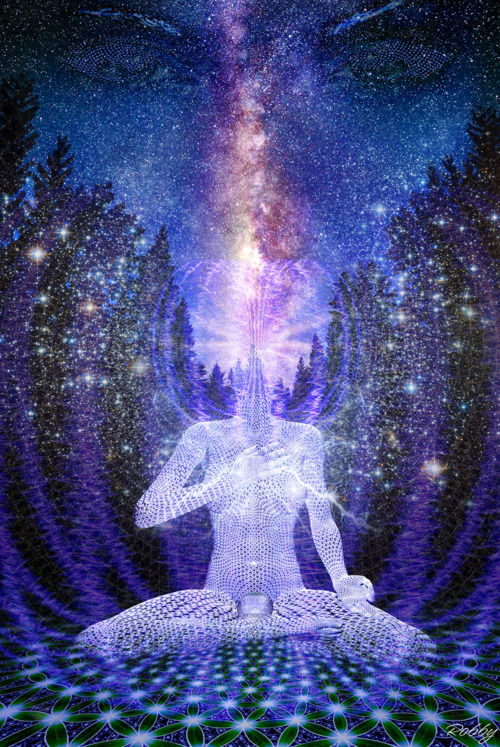Rebirth in Buddhism refers to its teaching that the actions of a person lead to a new existence after death, in endless cycles called saṃsāra. This cycle is considered to be dhukkha, unsatisfactory and painful. The cycle stops only if liberation is achieved by insight and the extinguishing of desire. Rebirth is one of the foundational doctrines of Buddhism, along with Karma, nirvana.
The rebirth doctrine in Buddhism, sometimes referred to as reincarnation or metempsychosis, asserts that rebirth does not necessarily take place as another human being, but as an existence in one of the six Gati (realms) called Bhava chakra. The six realms of rebirth include God (heavenly), Asura (Demigod), Manusya (Human), Tiryak (Animals), Preta (Ghosts), and Naraka (Resident of hell).
The Six Karmic Realm of Rebirth.
These are the fundamental factors that are determined by karma and connecting us to the six Gati or “realms” :-
1 ) The God realm / 天道 - The suffering of the gods arises from foreseeing one’s fall from the god’s realm and these sufferings come from pride, arrogance and egotism.
2) Asura The Demigod realm / 阿修羅道 - The suffering of Asura the Demigod is constant fighting and these sufferings come from jealously, resentment, and envy.
3) The Human realm / 人道 - The sufferings of humans are birth, sickness, old age and death and these sufferings come from desire and attachment.
4) The Animals realm / 畜生道 - The sufferings of animals are being preyed upon one another, or being killed for meat, skin etc. These sufferings come from ignorance.
5) The Hungry ghost realm / 餓鬼道 - The sufferings of hungry ghost is hunger and thirst and these sufferings come from greed.
6) The Hell realm / 地獄道 - The suffering of hell is hot and cold and these sufferings come from hatred and angers.
This rebirth, state Buddhism traditions, is determined by karma, with good realms favored by Kushala (good karma), while a rebirth in evil realms is a consequence of Akushala (bad karma). While Nirvana is the ultimate goal of Buddhist teaching, much of traditional Buddhist practice has been centered on gaining merit and merit transfer, whereby one gains rebirth in the good realms and avoids rebirth in the evil realms.
The rebirth doctrine has been a subject of scholarly studies within Buddhism since ancient times, particularly in reconciling the rebirth doctrine with its Anatman (no self, no soul) doctrine. Some Buddhist traditions assert that "no self" doctrine means that there is no per during self, but there is inexpressible self which migrates from one life to another.
The majority of Buddhist traditions, in contrast, asserts that Vijnana (a person's consciousness) though evolving, exists as a continuum and is the mechanistic basis of what undergoes rebirth, becoming and death. Some traditions assert that the rebirth occurs immediately, while others, such as the Tibetan Buddhism posits an “Bardo” interim state wherein as many of 49 days pass between death and rebirth and this belief drives the local funerary rituals.
Tibetan Buddhism holds that there are two ways that someone can take rebirth after death. The first is to be reborn involuntarily, under the sway of ‘karma’, drawn back to life by destructive emotions and desires.
This is the fate of most of us, but there are a few, select others, through the power of compassion and prayer to benefit others, are believed to be able to choose their place and time of birth as well as their parents. The process of identifying these reincarnate beings is e called “Rinpoches, the precious one” or "tulkus" as we are known, is a unique mixture of magic and politics.
In a monastic society, where celibacy was the rule, it served for more than 900 years not only to affirm the Buddhist teachings of a realized soul choosing the circumstances of their rebirth for the benefit of mankind; it also ensured a continuity of spiritual and political hierarchy.
His Holiness Karmapas, who introduced the system of identifiable reincarnation in the 11th century, are unique in leaving a letter of prediction before their death, specifying where their next incarnation will be found. In other lineages, identification will usually involve a mixture of dreams, divinations and the consulting of oracles. It is an inexact science, practiced in different ways across the four main schools of Tibetan Buddhism.
Thank you for reading, may you find peace and great bliss. With your support it helps to spread the Buddha’s precious teachings and turning the Dharma wheels in the world.
Aspiration For Bodhichitta
For those in whom the precious Bodhichitta has not arisen
May it arise and not decrease
But increase further and further.
Dedication of Merit
By this merit may we obtain omniscience then.
Having defeated the enemies wrong-doings.
May we liberate migratory from the ocean of existence.
With its stormy waves of birth, old age, sickness and death.
*Note
I do not own or infringe any copyright of the picture(s).
Picture(s) courtesy and credit to the rightful distributors and or studios.
Picture(s) is/are intended for editorial use only.












